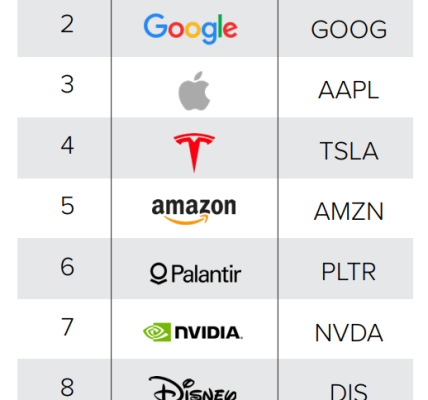Building a successful business hinges on many factors‚ but one of the most critical is assembling a team of talented and dedicated individuals. The process of finding and attracting the right employees can be challenging‚ requiring a strategic approach and a keen understanding of your company’s needs. Navigating the complexities of recruitment is crucial‚ and thankfully‚ with a well-defined strategy‚ you can significantly increase your chances of securing top-tier talent who will contribute to your organization’s growth. This article outlines five key steps to help you master the art of hiring the right people.
Step 1: Define Your Ideal Candidate Profile
Before you even begin to advertise a position‚ take the time to thoroughly define what you’re looking for in a candidate. This goes beyond simply listing required skills and experience. Consider the following:
- Skills and Experience: What specific technical skills are absolutely essential? What level of experience is needed to perform the job effectively?
- Personality and Cultural Fit: What type of personality will thrive in your company culture? Are you looking for someone who is independent and self-motivated‚ or someone who excels in a collaborative environment?
- Long-Term Goals: Where do you see this position evolving in the future? Are you looking for someone who has the potential to grow with the company?
Creating a detailed profile of your ideal candidate will help you focus your search and ensure you’re attracting applicants who are truly aligned with your needs.
Step 2: Craft a Compelling Job Description
Your job description is your first impression on potential candidates. It should be clear‚ concise‚ and engaging. Avoid using jargon or overly technical language that might discourage qualified applicants. Instead‚ focus on the following:
- Highlight the company culture and values.
- Clearly outline the responsibilities and expectations of the role.
- Showcase the opportunities for growth and development.
A well-written job description will not only attract more applicants but also help to filter out those who are not a good fit.
Step 3: Effective Sourcing and Screening
Once you have a compelling job description‚ it’s time to start sourcing candidates. Consider a variety of channels‚ including:
- Online job boards (Indeed‚ LinkedIn‚ etc.)
- Company website
- Employee referrals
- Industry-specific networks
After receiving applications‚ implement a thorough screening process to identify the most promising candidates. This might include:
- Resume review: Carefully examine each resume for relevant skills and experience;
- Phone screenings: Conduct brief phone interviews to assess communication skills and cultural fit.
- Skills assessments: Administer tests or assignments to evaluate technical abilities.
Step 4: Conduct Thorough Interviews
The interview process is your opportunity to get to know the candidates on a deeper level. Prepare a list of structured interview questions that are designed to assess not only their skills and experience but also their problem-solving abilities‚ critical thinking skills‚ and personality. Remember to allow ample time for candidates to ask questions as well. This is an opportunity for them to evaluate if they are a good fit for your company. This is where you truly determine if you are hiring the right people.
Step 5: Background Checks and Reference Checks
Before making a final offer‚ it’s crucial to conduct thorough background checks and reference checks. This will help you verify the information provided by the candidate and identify any potential red flags. Contact previous employers to inquire about their performance‚ work ethic‚ and overall suitability for the role.
Ultimately‚ the success of your business depends on the strength of your team. Therefore‚ hiring the right people is paramount‚ and by following these five steps‚ you can significantly increase your chances of building a high-performing workforce that will drive your company’s success. Taking the time to carefully plan and execute your recruitment strategy will pay dividends in the long run.
But‚ is simply following these steps a guarantee of success? Shouldn’t you also consider implementing a trial period‚ allowing both you and the potential employee to assess the fit in a real-world setting? And what about ongoing training and development? Is it not essential to invest in your employees’ growth to retain top talent and ensure they remain valuable contributors to your organization?
Beyond the Basics: Are You Really Ready to Hire?
Have you truly assessed your company’s current needs? Are you hiring reactively‚ filling a gap without considering the long-term implications? Wouldn’t it be more prudent to proactively plan your workforce‚ anticipating future needs and identifying skill gaps before they become critical? Have you considered the cost of a bad hire? Isn’t it significantly more expensive to replace an employee than to invest in a robust recruitment process?
The Ever-Evolving Landscape of Hiring: Are You Keeping Up?
Are you leveraging the latest technologies and tools to streamline your hiring process? Are you using applicant tracking systems (ATS) to manage applications and automate tasks? What about video interviews? Could they save you time and resources while still providing valuable insights into a candidate’s communication skills and personality? And are you actively building your employer brand? Shouldn’t you be showcasing your company culture and values to attract top talent who are aligned with your mission? What about utilizing social media for recruitment?
Final Considerations: Are You Listening?
Are you truly listening to your employees? Are you gathering feedback from them about the hiring process? Could their insights help you identify areas for improvement? And are you staying open-minded throughout the process? Are you willing to consider candidates from diverse backgrounds and experiences? Wouldn’t a diverse workforce bring a wider range of perspectives and ideas to your organization‚ fostering innovation and creativity?
So‚ while the five steps provide a solid framework‚ aren’t the questions and continued reflection even more critical to truly mastering the art of hiring the right people? Shouldn’t you constantly evaluate and refine your approach to ensure you’re attracting and retaining the best talent possible?


